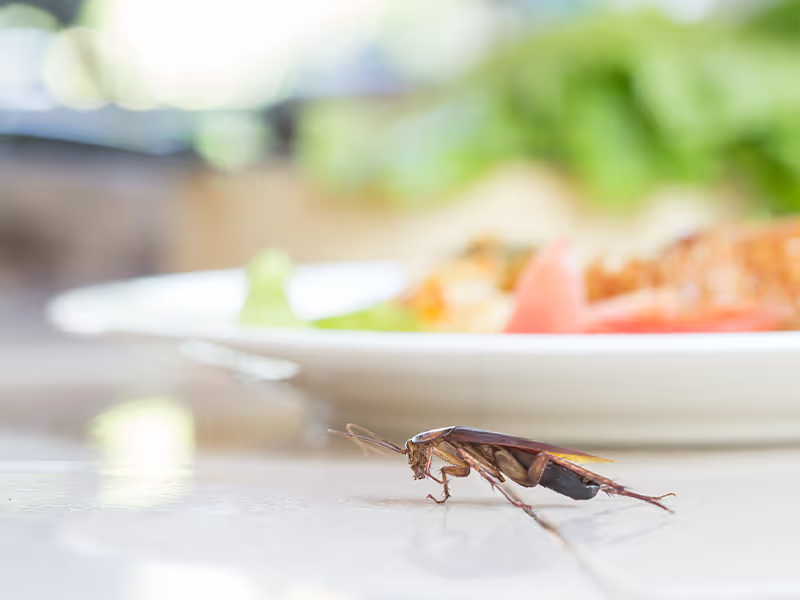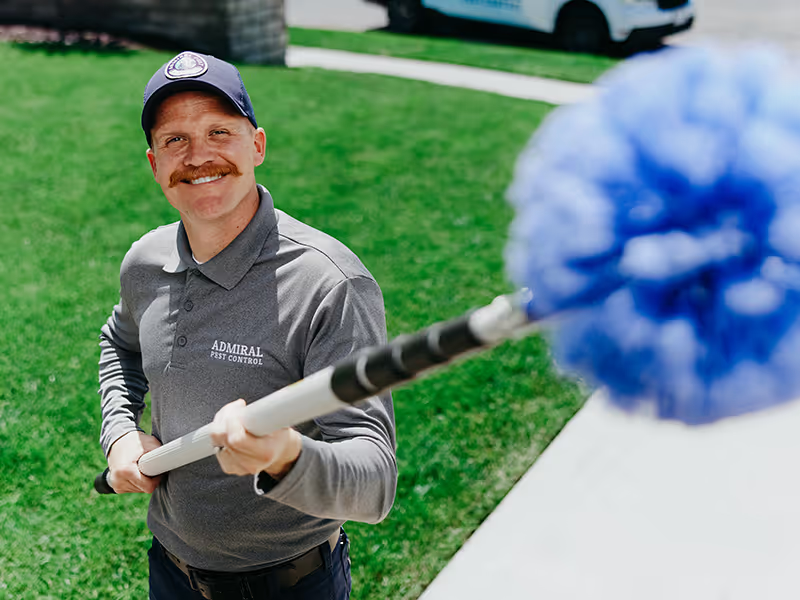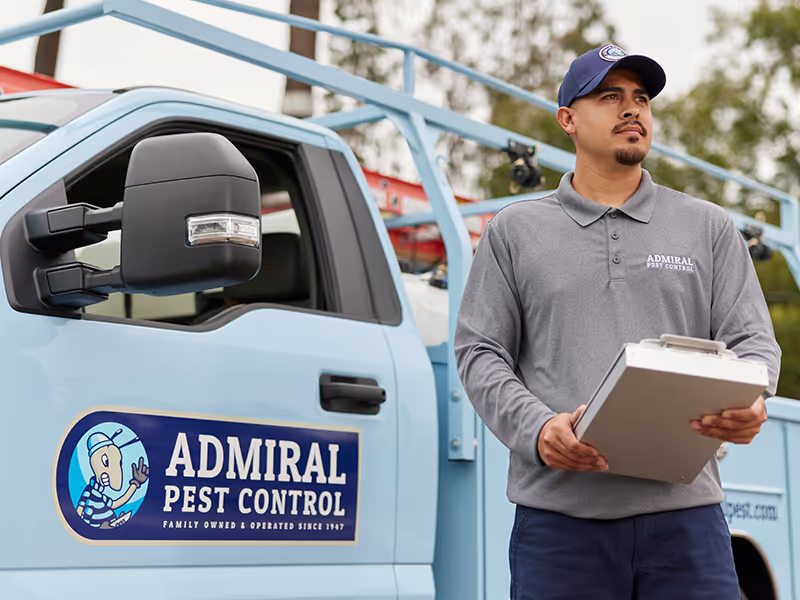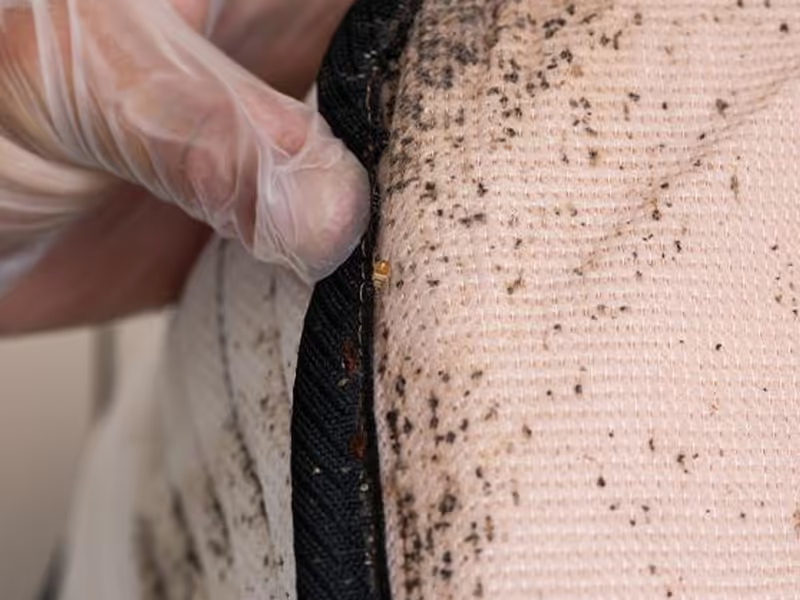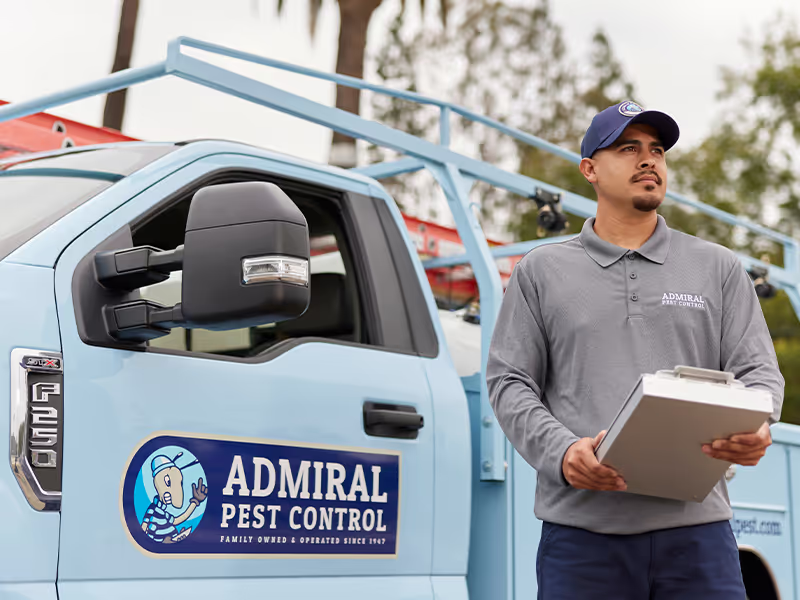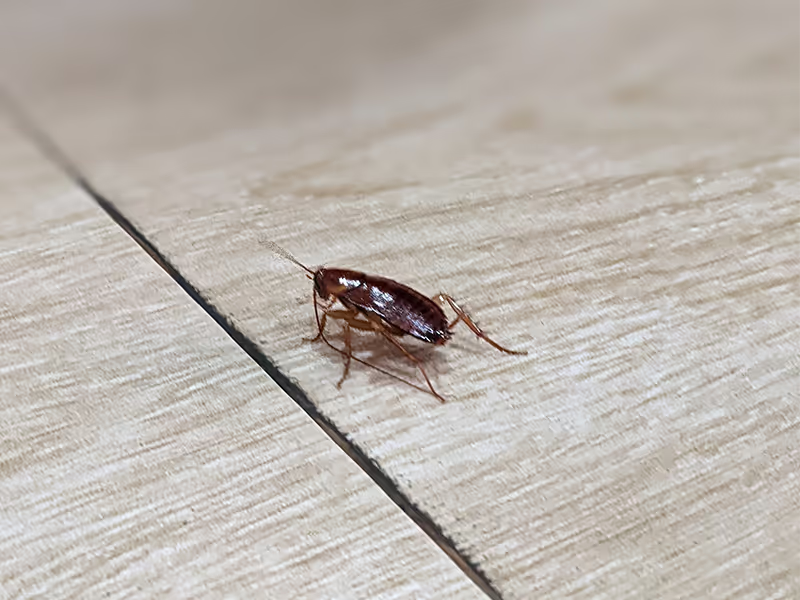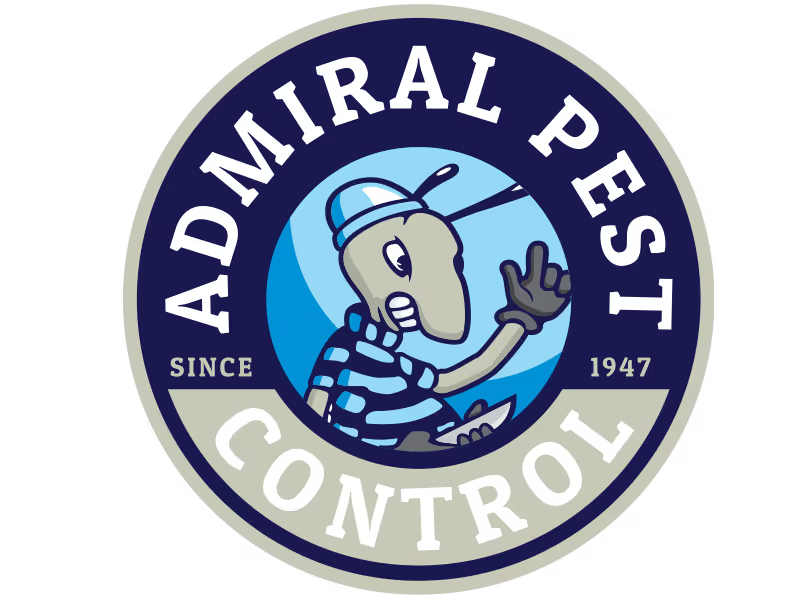Does Seeing Baby Cockroaches Mean You Have an Infestation?
Seeing baby cockroaches, also known as nymphs, can be a sign of an infestation. Baby roaches usually stay close to where they were born, which means their mother and other roaches are likely nearby. If you spot a baby cockroach, it means there is a breeding population of roaches in your home, and you need to act quickly to control the problem before it gets worse.
How to Identify a Baby Roach?
Identifying baby cockroaches is essential in determining whether you have an infestation. Baby cockroaches are small, typically about the size of a grain of rice. They are usually light brown or tan in color and have a soft, smooth body. Unlike adult roaches, baby roaches do not have wings and might look somewhat like tiny beetles. If you see small, quick-moving insects that match this description, you might be looking at baby cockroaches.
What Common Bugs Can Be Mistaken for a Baby Roach?
Several other insects can be mistaken for baby cockroaches. These include:
- Carpet Beetles: These are small, round insects that can be brown, black, or mottled in color. They are often found in carpets, clothing, and stored food.
- Bed Bugs: Bed bugs are small, flat, and reddish-brown. They are usually found in mattresses and furniture, and they feed on blood.
- Booklice: These tiny, pale insects are often found in books and papers. They are harmless but can be confused with baby roaches.
Is It Worse to See Baby Roaches or Big Roaches in Your Home?
Seeing baby roaches can be worse than seeing big roaches because it usually indicates a breeding population. Adult roaches might be solitary invaders, but baby roaches suggest that there are adults reproducing somewhere in your home. This means you are likely dealing with a larger, more established infestation.
What Happens If You Only See Baby Roaches?
If you only see baby roaches, it could mean a few things:
- Recent Hatchings: You might be seeing a recent hatching, and the adults are hiding.
- Effective Treatments: If you’ve recently treated your home for roaches, the treatment might have killed many adults, leaving behind only the babies.
- Either way, seeing baby roaches indicates that there is still a problem that needs addressing.
Why Am I Seeing Baby Roaches But No Adults After Treatment?
Seeing baby roaches but no adults after treatment is common. This could happen because:
- The Treatment Worked: The treatment might have killed most of the adult roaches, leaving only the newly hatched nymphs.
- Hiding Adults: Adult roaches are excellent at hiding and might be avoiding areas treated with insecticides.
- It is crucial to continue with follow-up treatments to ensure all stages of roaches are eradicated.
How to Find a Roach Nest?
Finding a roach nest can help you target your pest control efforts more effectively. Roaches often nest in dark, warm, and moist areas. Common places to check include:
- Kitchens: Under sinks, behind appliances, and in cabinets.
- Bathrooms: Behind toilets, under sinks, and in cabinets.
- Basements and Attics: Near water heaters, boilers, and storage areas.
- Look for signs of roach activity such as droppings, shed skins, and egg cases.
What Do Newly Hatched Roaches Look Like?
Newly hatched roaches are tiny, about the size of a grain of rice. They are usually brown or light brown and become darker as they mature. These baby roaches, or nymphs, will molt several times as they grow into adults, changing color and size with each molt.
How Do You Know If It’s a Roach or Not?
To determine if the insect you see is a roach, look for these characteristics:
- Shape: Oval-shaped body.
- Color: Light brown or tan (for baby roaches).
- Movement: Fast-moving and quick to hide.
- Location: Found in kitchens, bathrooms, or other areas with food and moisture.
If the insect you see matches these characteristics, it is likely a cockroach.
What Are the Little Roaches in My Kitchen?
The little roaches in your kitchen are probably German cockroaches, one of the most common household pests. German cockroaches are small, light brown, and often found in kitchens because they prefer warm, moist environments with plenty of food. These roaches are known for their rapid reproduction and can quickly become a major problem if not controlled.
Why Am I Seeing Baby Roaches in My House?
If you are seeing baby roaches in your house, it means there is a breeding population of cockroaches nearby. Common reasons for seeing baby roaches include:
- Food Sources: Roaches are attracted to food crumbs, spills, and garbage.
- Moisture: Leaky pipes, standing water, and high humidity provide the moisture roaches need to survive.
- Shelter: Cluttered areas, cracks, and crevices offer perfect hiding and nesting spots for roaches.
How Do You Identify a Baby Cockroach?
Identifying a baby cockroach, also known as a nymph, is crucial for understanding whether you have an infestation and how to address it. Here are the specific features to look for:
- Size: Baby cockroaches are very small, typically ranging from 1/8 to 1/4 inch long. When they first hatch, they can be even smaller, almost the size of a grain of rice. As they grow, they molt several times, gradually increasing in size until they reach adulthood.
- Color: Newly hatched baby cockroaches are usually white or light gray, but they darken quickly as they mature. Most baby cockroaches you’ll see are light brown to tan. This coloration helps them blend into their environment, making them harder to spot.
- Body: The body of a baby cockroach is smooth and oval-shaped, with a soft, flexible exoskeleton that hardens as they grow. Unlike adult cockroaches, nymphs do not have wings, which makes them look quite different from their fully-grown counterparts. They might have small wing pads, but these do not develop into functional wings until they reach adulthood.
- Behavior: Baby cockroaches are incredibly quick and agile. They tend to hide in cracks, crevices, and other dark, hidden spots during the day. They are nocturnal, meaning they are most active at night, when they come out to search for food and water. If you disturb their hiding places, they will scurry away rapidly, making them difficult to catch.
Additional Identifying Features
In addition to the primary characteristics, there are a few more details that can help you identify baby cockroaches:
- Antennae: Like adult roaches, baby cockroaches have long, thin antennae that they use to sense their environment. These antennae are often longer than their bodies and are constantly moving.
- Legs: Baby cockroaches have six legs that are spiny and help them run quickly. Their legs are well-adapted for crawling into tiny spaces.
- Molting: As they grow, baby cockroaches molt, shedding their exoskeleton several times before reaching adulthood. Each molting stage, known as an instar, will show slight differences in size and development.
Common Species of Baby Cockroaches
Understanding the specific species of baby cockroach can also be helpful. Here are descriptions of baby cockroaches from some of the most common household species:
German Cockroach Nymphs:
- Size: About 1/8 inch long at first.
- Color: Light brown with two dark stripes running down their back.
- Habitat: Often found in kitchens and bathrooms.
American Cockroach Nymphs:
- Size: Larger than German nymphs, about 1/4 inch long initially.
- Color: Reddish-brown.
- Habitat: Prefer warm, damp areas like basements and drains.
Oriental Cockroach Nymphs:
- Size: Similar in size to American nymphs.
- Color: Dark brown to black.
- Habitat: Often found in cooler, damp areas such as basements and crawl spaces.
Where to Look for Baby Cockroaches
To identify baby cockroaches effectively, you need to know where to look for them. They prefer dark, moist, and hidden areas close to food and water sources. Common places to check include:
- Kitchens: Under sinks, behind appliances, inside cabinets, and around garbage areas.
- Bathrooms: Under sinks, behind toilets, and in bathroom cabinets.
- Basements and Crawl Spaces: Near water heaters, boilers, and in dark corners.
- Utility Areas: Around laundry rooms, pipes, and drains.
Why It’s Important to Identify Baby Cockroaches
Identifying baby cockroaches early can help you take prompt action to control an infestation. Since they indicate a breeding population, their presence suggests that adult cockroaches are nearby and that eggs are being laid continuously. By identifying and targeting baby cockroaches, you can disrupt the lifecycle and prevent the population from growing.
What to Do If You Find Baby Cockroaches
If you identify baby cockroaches in your home, here are some steps you should take:
- Clean Thoroughly: Remove food crumbs, spills, and clutter. Clean under appliances, inside cabinets, and other hidden areas.
- Eliminate Moisture: Fix leaky pipes, dry out damp areas, and use dehumidifiers if necessary.
- Seal Entry Points: Close off cracks, crevices, and gaps around windows, doors, and pipes to prevent more roaches from entering.
- Use Bait and Traps: Place cockroach baits and traps in areas where you’ve seen baby cockroaches to reduce their numbers.
- Consult a Professional: If the infestation is severe, it may be best to consult a pest control professional to effectively eliminate the problem.
By knowing how to identify baby cockroaches and understanding their habits, you can take the necessary steps to protect your home from these persistent pests.
Conclusion
Seeing baby cockroaches in your home is a sign that you may have an infestation. It is essential to identify these pests correctly and understand what seeing them means. Baby roaches indicate that there is a breeding population nearby, and immediate action is required to prevent the problem from worsening. By knowing how to identify baby cockroaches, where they might be hiding, and how to control them, you can protect your home from these unwelcome invaders. If you suspect a roach infestation, consider contacting a professional pest control service to help eradicate the problem completely.

